In August 2002 while at the American Philatelic Society (APS) Stamp Show, several of us frugal-philatalists discovered a dealer who had just purchased 27,000 covers from a single commercial mailer.
While most of the covers were common usages, there were several surprises.
The following cover was mailed on November 9, 1962 and was returned to the sender on November 14th with 8¢ Postage Due. The cover was originally franked with a 3¢ Liberty (SCOTT 1035, Krause-Minkus 573p) which paid the proper 3rd Class single piece rate.
Eight cents due? What was that all about? None of us at the table could remember such a postage due rate during the 1960s.
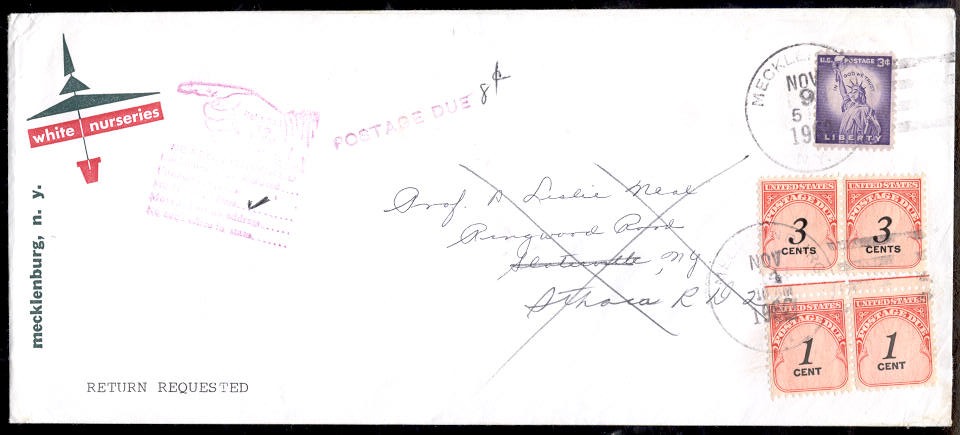 |
Another cover showed the same 8¢ due... this one not using Postage Due stamps but having the due paid by a pair of 4¢ Lincolns (SCOTT 1036, Krause-Minkus 574p) canceled on Nov 15th. The cover was initially mailed on Nov 10th at the 3rd Class single piece rate of 3¢ paid by six hastily(?) applied ½¢ Franklins (SCOTT 1030, Krause-Minkus 569p)
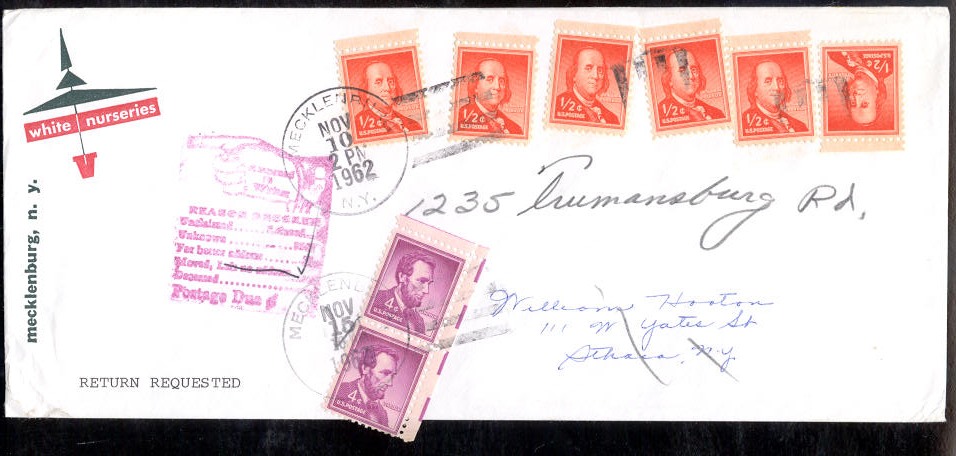 |
More searching through those 27,000 covers produced some covers from 1968 which were also Returned to the Sender but this time with 10¢ Postage Due. This cover, with a Bulk Rate indicium, shows the 10¢ due paid by a single 4¢ Lincoln (SCOTT 1036, Krause-Minkus 574p) and a 6¢ Illinois commemorative from 1968.
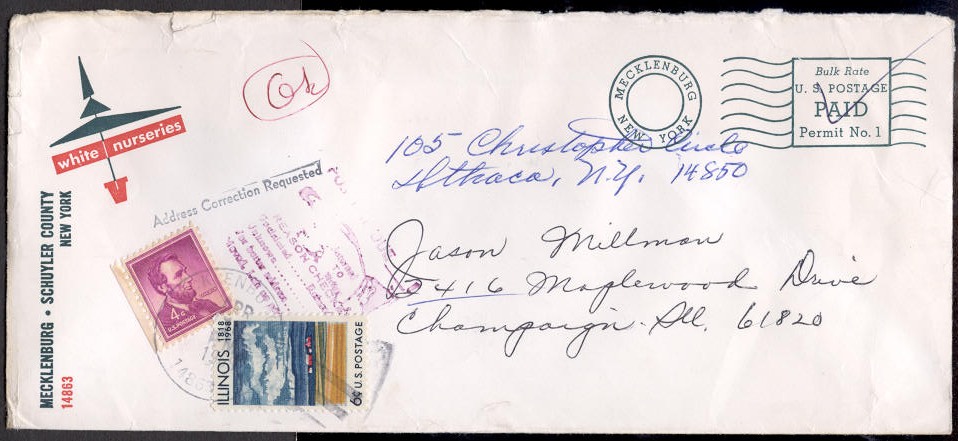 |
Another cover showed the same 10¢ due. This time the cover used a 50¢ Anthony (SCOTT 1051, Krause-Minkus 584p) to pay the due on presumably a stack of five returned covers.
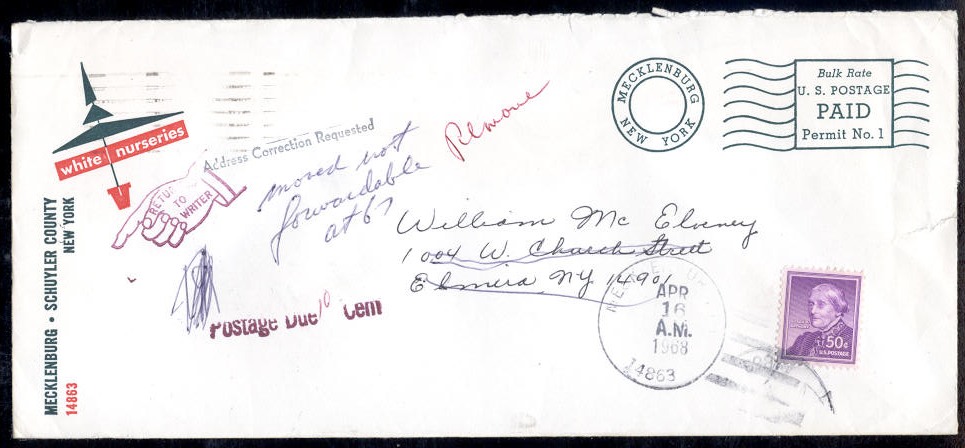 |
An April 16, 1968 cover shows 10¢ due, this time paid by a 7¢ due stamp and three 1¢ Jacksons (SCOTT 1209, Krause-Minkus 607). Perhaps you can explain the marked 21¢ due... I can't.
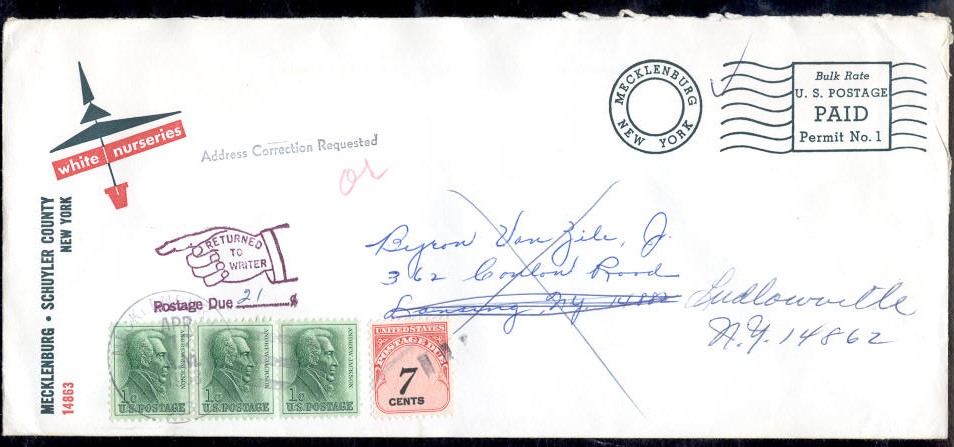 |
The following excerpt from page 282 of US Domestic Postal Rates 1872-1999, by Henry W Beecher and Anthony S Wawrukiewicz, explains the 8¢ and 10¢ dues.
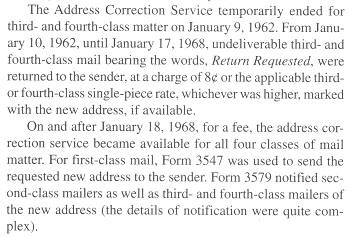 |